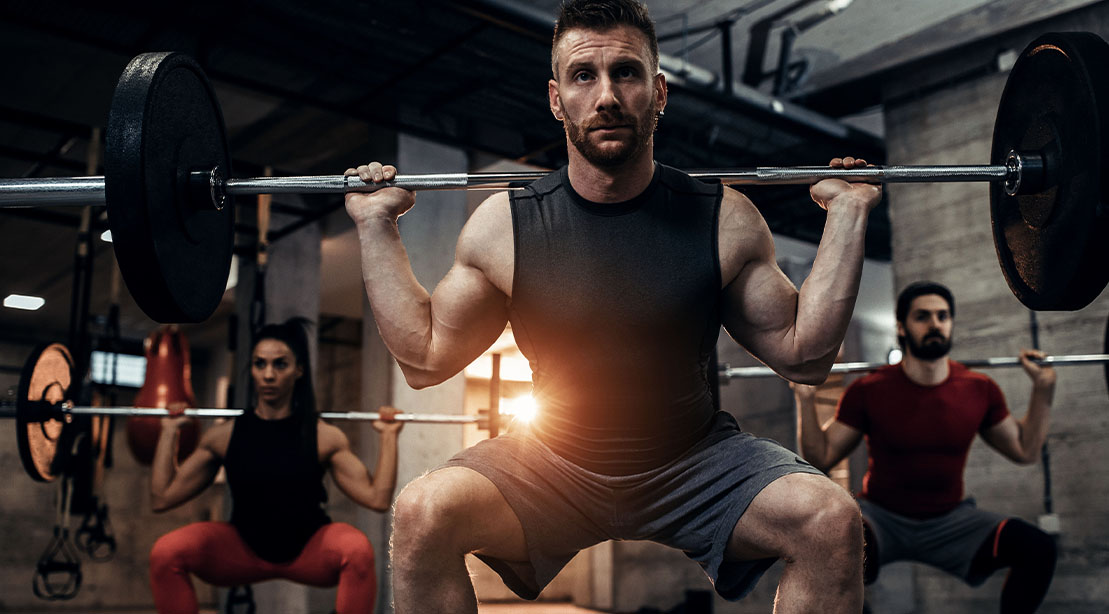Maximize Movement and Strength with Mobility Training

Why Mobility Training Matters for Strength Gains
I didn’t realize how much mobility training mattered until it was too late. I was standing over a heavily loaded barbell, ready to tackle a Sumo deadlift, thinking I had all my bases covered. But as I bent down, my lower back rounded because my hips lacked the mobility to hinge properly, and as I lifted the bar, a crack in my spine signaled something had gone terribly wrong.
It was a hard lesson in understanding that strength isn’t just about lifting weights. It’s about having the mobility to move as intended. The truth is, without good mobility, your strength gains will have a ceiling. Here, we’ll dive into mobility training and why it is the missing piece for your gains.
Why Mobility Exercises Are Important
Mobility is one of many underrated aspects of fitness.
While everyone focuses on muscle, strength, and cardio, mobility often gets left behind. But here’s the reality: without proper mobility, your joints can’t handle the stresses of lifting, running, or even everyday movements. Mobility allows your joints to move through their full range of motion, ensuring your body can move efficiently and effectively.
As we age, mobility becomes even more important because stiffness creeps inmaking everything from workouts to daily activities harder. By training mobility, you’ll reduce your risk of injury, improve your posture, and maintain the ability to keep lifting heavy and adding muscle.
Why Mobility Training Gets Overlooked?
Mobility training often gets overshadowed by more “glamorous” forms of exercise like weightlifting or high-intensity cardio. But the truth is that mobility is the glue that holds everything together. Without it, your body can’t move efficiently, and eventually, you’ll hit a wall in your performance—or you get a visit by the injury fairy.
Many lifters mistake mobility for flexibility, but it’s much more than that. Mobility combines flexibility, strength, and control. It’s about moving your joints through their intended range of motion, supported by strength. By training joint mobility, you’re not just increasing how far you can stretch—you’re enhancing your ability to lift, run, and move pain-free.
Think of mobility as your secret weapon in training. Often, we don’t realize how critical it is until we lose it. Just like ignoring the foundation of a house or neglecting mobility, it will eventually lead to cracks in your back performance and health.
Why Mobility Training May Be the Missing Piece to Your Gains
Consider the big lifts like squats, deadlifts, and overhead presses. Now, imagine doing them without GOOD mobility. If your joints aren’t moving through their full range of motion, you’re not just leaving gains on the table—you’re putting yourself at risk of injury. Your body will always find a way to get the job done, even if it means compensating with the wrong muscles or placing unnecessary strain on your joints not designed for mobility.
Mobility forms the foundation that supports your strength and prevents injuries. The more mobile you are, the more your muscles perform better during those key lifts. When you have decent mobility, you’re working your muscles more effectively, and you’ll avoid the kind of compensations that can lead to serious injury down the road.
In short, mobility training enhances your performance and protects your joints from wear and tear. Mobility is non-negotiable if you want to get stronger and stay in the game for the long haul.
3 Tips To Add Mobility Exercises to Your Routine
Now that you understand the importance of mobility, how do you incorporate it into your workout? Here are three key ways to seamlessly blend mobility work into your training:
1. Warmup
The best time to work on mobility is during your warmup. Start each workout with dynamic mobility drills targeting the joints you’ll be using. For example, focus on opening up your hips and ankles on leg day. On upper-body days, loosen your shoulders and thoracic spine. A few minutes of focused mobility work primes your body for heavier lifts, improves your form, and reduces your risk of injury.
2. Active Recovery
Mobility isn’t just for the warmup; performing it as active recovery between strength sets is also the bomb. For example, if you’re doing heavy squats, use your rest periods to work on ankle or hip mobility. This keeps your body moving, speeds up recovery, and reinforces the range of motion (ROM) needed for improved performance.
3. Cool-Down
After finishing your workout, don’t skip the cool-down. This is the perfect opportunity to restore your joints’ ROM and help your muscles recover. Spend a few minutes focusing on your shoulders or upper back after an upper-body session or your hips and legs after a lower-body day.
4 Mobility Exercises and Drills for Gains
Now that you know how important mobility is and how to fit it into your routine, let’s discuss specific drills that will help. These exercises are simple and effective at improving mobility in your hips, shoulders, and ankles.
Prying Squat
This exercise improves hip mobility, particularly if you have tight inner thighs. It strengthens and mobilizes the muscles around your hips, allowing deeper, more effective squats.
- Hold a light kettlebell or dumbbell in a goblet position and squat as low as possible.
- Use your elbows to press your knees outward while gently rocking side to side.
- Keep your chest up and shoulders down.
Programming suggestion: Perform two sets of 30 seconds as part of your leg-day warmup.
Half-Kneeling Hip Flexor Stretch With Reach
Sitting all day tightens your hip flexors, and this stretch helps undo that tightness.
- In a half-kneeling position, squeeze your glutes to tilt your pelvis forward.
- Reach forward while holding onto a pole to reach the optimal position.
- Hold for your desired time, then switch sides.
Programming suggestion: Hold for 30 seconds to 1 minute on each side during your warmup or between lower-body exercises.
3-Way Ankle Mobilization
Ankle mobility is critical for lower-body exercises. Three-way ankle mobilization improves ankle dorsiflexion and relieves pressure on the knees and hips.
- In a half-kneeling position, drive your knee over your toes while keeping your heel flat.
- Repeat in three directions: straight, inside, and outside.
Programming suggestion: 1 set of 8 reps in each direction per side, ideally before lower-body workouts.
Supine Floor Slides
This exercise improves shoulder mobility and posture, especially if you spend long periods sitting. It engages your mid- and upper back, which is crucial for overhead movements.
- Lie on your back with your knees bent and your back flat.
- Start with your elbows bent at 90 degrees, then slide your hands up the floor above your head while keeping everything in contact with the ground.
- Return to the starting position and repeat.
Programming suggestion: Perform two sets of 8-10 reps as part of your warmup or between upper-body exercises.
Conclusion
Mobility is a crucial component of strength training that is often overlooked. By incorporating mobility exercises into your routine, you can improve your performance, reduce your risk of injury, and enhance your overall fitness. Remember to always prioritize mobility when designing your workout routine and make sure to include a mix of exercises that target different joints and muscle groups.
FAQs
Q: What is the difference between mobility and flexibility?
A: Flexibility refers to the ability to move your joints and muscles through a range of motion. Mobility, on the other hand, is the ability to move efficiently and effectively through that range of motion. While flexibility is important, mobility is critical for performing daily tasks and exercises.
Q: How often should I incorporate mobility exercises into my routine?
A: It’s a good idea to incorporate mobility exercises into your routine at least 2-3 times per week, either as part of your warmup, cool-down, or as active recovery.
Q: Can I do mobility exercises on their own or should I include them in a workout?
A: While you can do mobility exercises on their own as a standalone routine, it’s often more effective to incorporate them into a workout routine. This can help you improve your performance, reduce your risk of injury, and make your workout more efficient.

